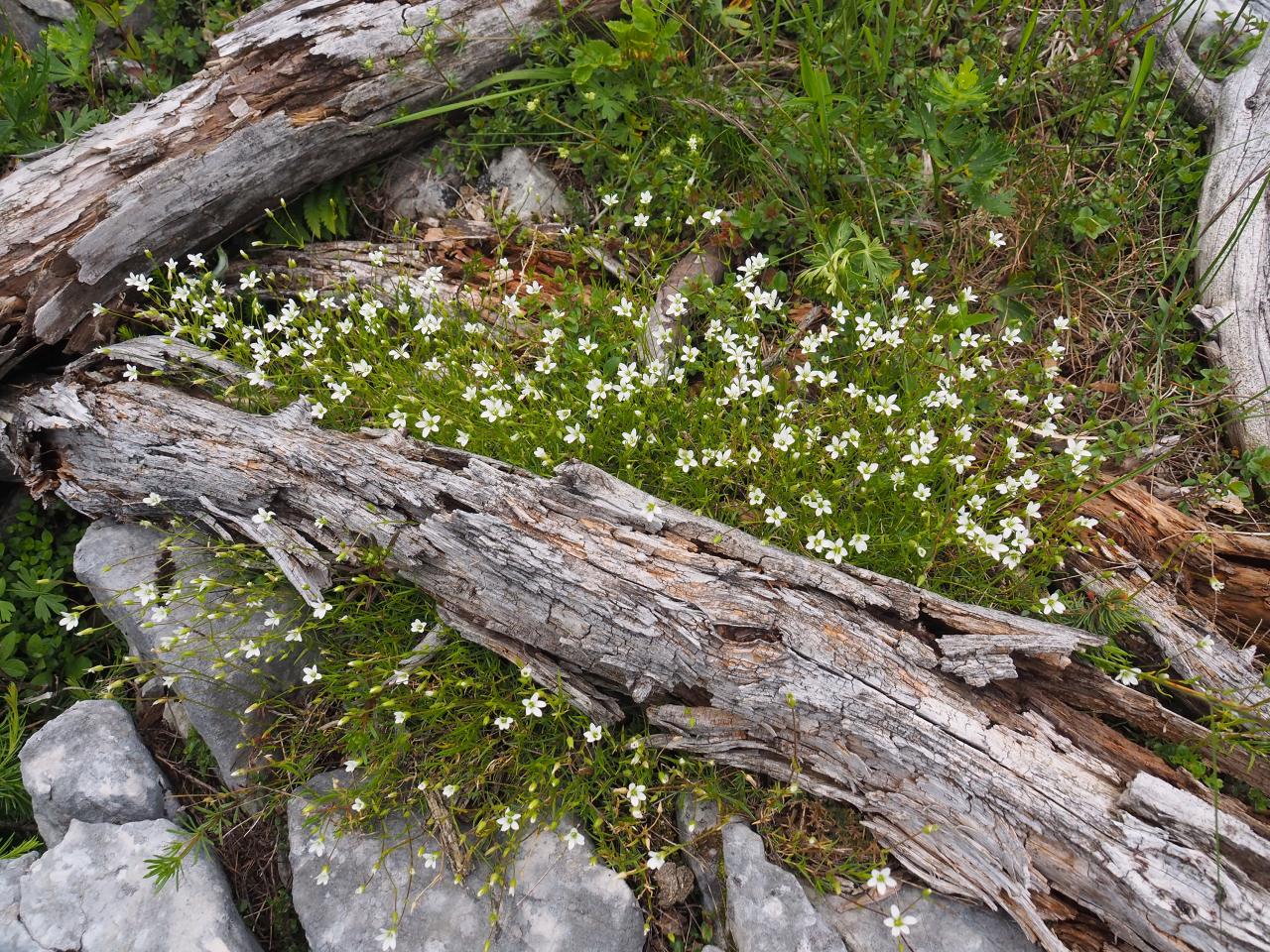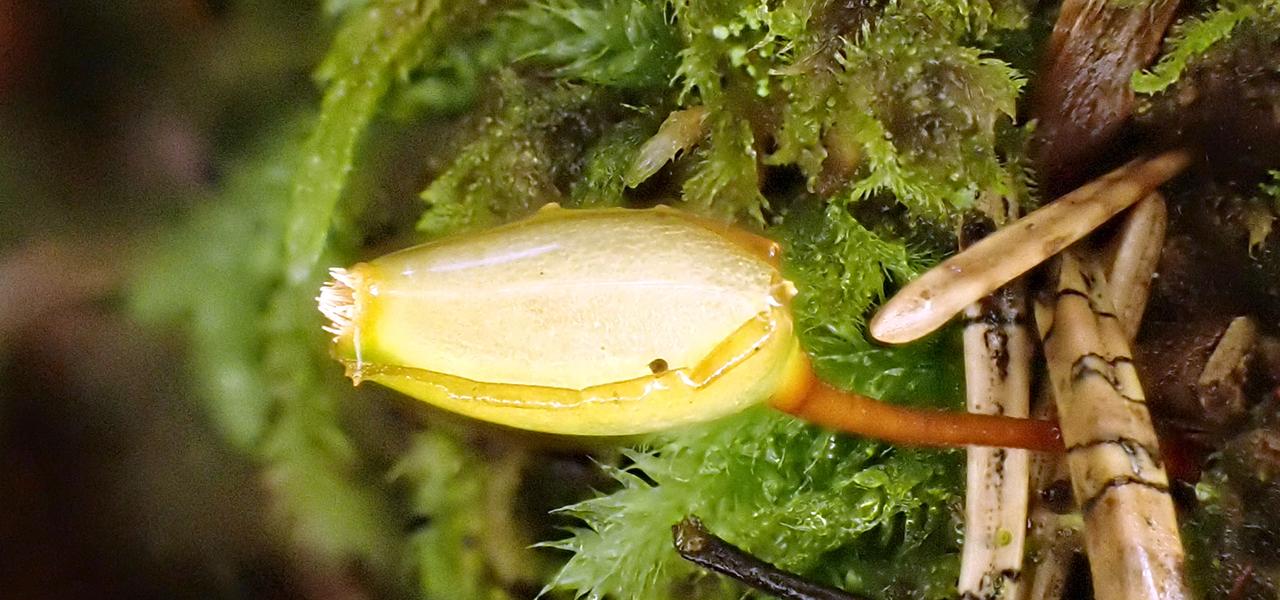As part of the LE 14-20 programme funded by the province of Upper Austria and the EU, an initial project to record the FFH mosses in Kalkalpen National Park was implemented from 2015 to 2017.
The main objective of the project was to selectively search for and document FFH species expected in the Kalkalpen NP area and to record their population structure. Based on this, the potential distribution of these species was to be analyzed. Experiences from the mapping should form the basis for an initial assessment of the conservation status and the importance of the area for the respective species. In addition, other deadwood mosses were to be recorded selectively.
In the course of the survey, the green fork-toothed moss(Dicranum viride) was found on 151 trunks (17 areas) in populations that in some cases covered almost square meters. The species grew either on dead wood or on living beech near bodies of water. The maximum distance from the watercourse depended on the fill of the streams and the exposure of the plots. N-exposures were preferred. At two sites, the species was also found with sporophytes, a circumstance that is reported as extremely rare in the literature. Dicranum viride certainly has one of its most important distribution focal points in Austria at Kalkalpen National Park . It is to be expected that the actual occurrences are even larger, as no area-wide survey of all occurrences was carried out, but the focus of the work was on developing an adequate distribution hypothesis.
The green goblin moss(Buxbaumia viridis) was found on 43 deadwoods in 14 areas. The number of sporophytes per dead wood was between one and more than twenty. The species mostly grew on lying deadwood, sometimes also on stumps, primarily of spruce, more rarely of larch. The average decomposition of the dead wood was moderate to severe. The species prefers less humid sites than Dicranum viride, mostly deadwood over humus-rich soils. The mean altitude of the occurrences (1100 m) was almost 400 m higher than that of Dicranum viride, which is primarily due to the distribution of spruce and larch. Occurrences at higher altitudes, which were not investigated, would be the target of further studies. Repeat monitoring in 2017 on two areas that showed particularly abundant occurrences in 2016 underlined the continuity of the occurrences of the 4 species in the following year, although 2017 was significantly drier than 2016. At present, the species appears to be more dispersal-limited than habitat-limited due to the abundance of dead wood. In the long term, when a natural tree population dominated by beech becomes established at lower altitudes, a slight decline in the species can be expected. Further studies on the distribution biology and ecology of the species should clarify this.
The Carinthian spade moss(Scapania carinthiaca) was found in three areas on moderately decomposed deadwood. The deadwood was all located directly next to streams; the species seems to need flooding. It is by far the rarest of the target species, and three new occurrences are noteworthy.
Overall, it can be said that Kalkalpen National Park is an important refuge for the survival of all three FFH species in Austria. In addition, despite only selective surveys, 59 other moss species were found on deadwood, including very rare species such as Scapania apiculata and Scapania scapanoides, which clearly underlines the importance of Kalkalpen National Park for the conservation of generally rare species on deadwood.
Further gaps in knowledge are to be clarified in an ongoing project that will be carried out in 2018-2020. For example, it is largely unknown what influence air pollutants have on the FFH mosses at Kalkalpen National Park . Experts are still in the dark when it comes to the dispersal and auto-ecology of the green goblin moss(Buxbaumia viridis). Detailed investigations and the installation of a monitoring system should provide better knowledge of the biology of this species and thus also contribute to securing its favorable conservation status. The Carinthian spade moss(Scapania carinthiaca), for which the national park also represents a center of distribution, is to be subjected to monitoring.
The entire final report can be read at this link:




